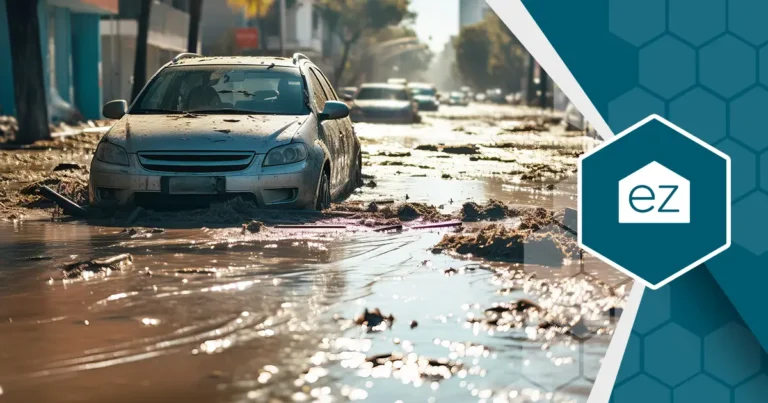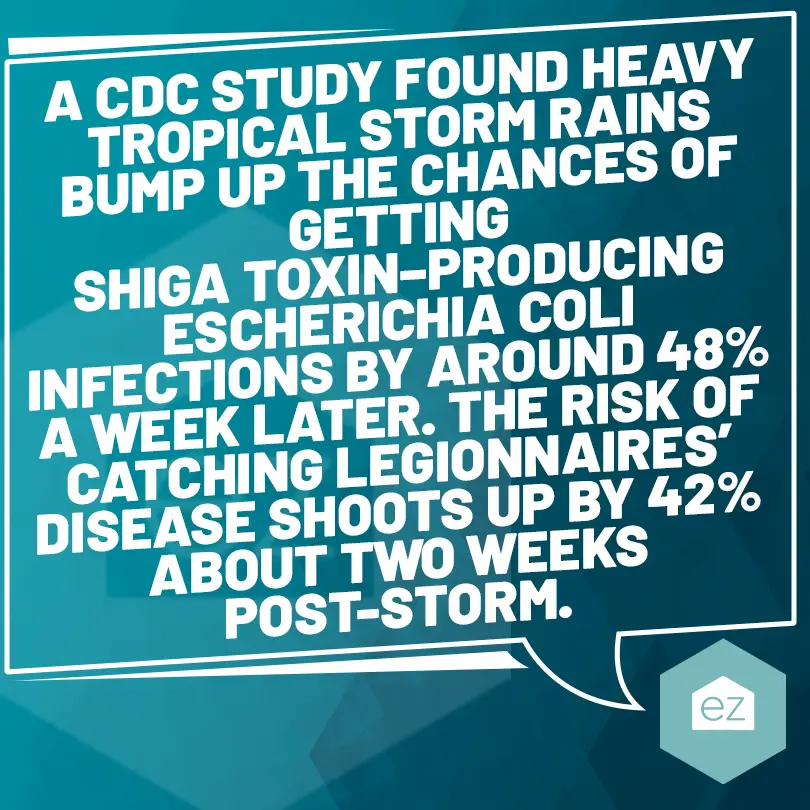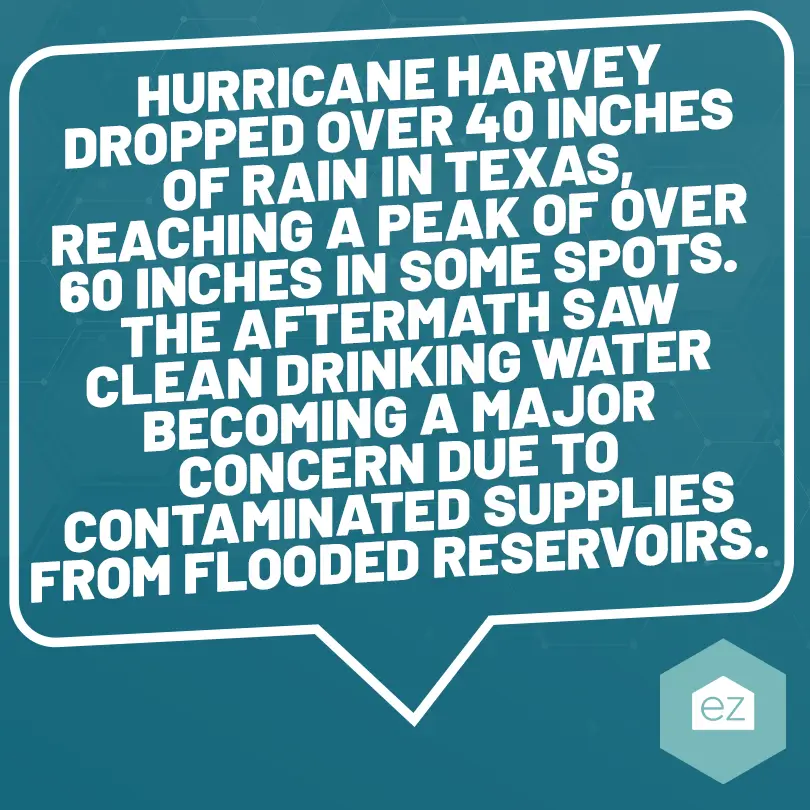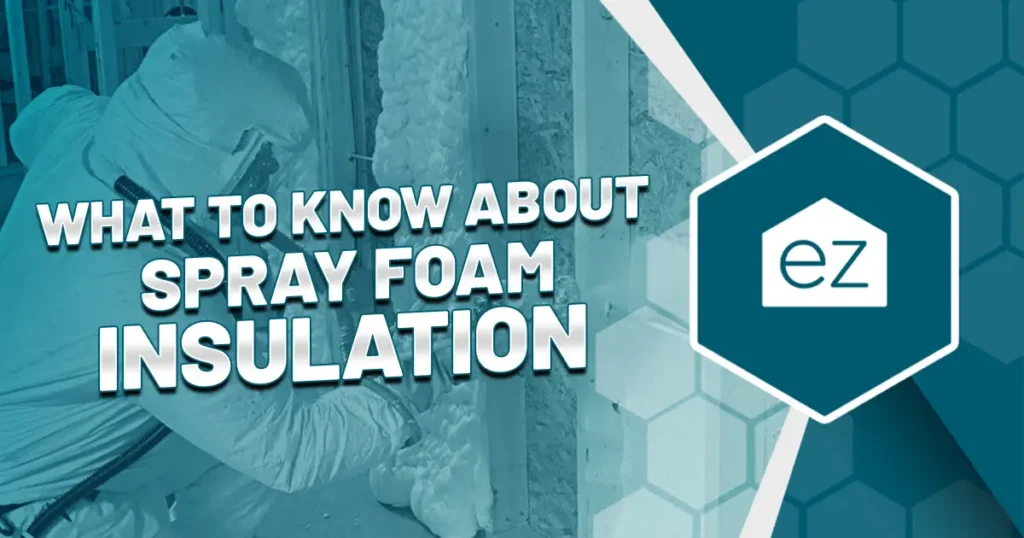Long-Term Homeowner Preparation: How To Ensure Access To Food and Clean Water During Severe Storms
Severe weather is only becoming more severe as climate change renders weather patterns increasingly unpredictable and intense. Consider how many more intense hurricanes have impacted the US South over the last five years. These events can transform from mere inconveniences to life-threatening situations without preparation. When preparing for storms like these, homeowners typically address items like securing patio furniture and stockpiling water.
But what if you are without power for over a day or two? After Hurricane Ian struck South Florida, restoring power in the hardest hit areas took over a week.
For those sheltering in place after a storm, FEMA recommends a minimum 3-day supply of water of 1 gallon a day per family member. But at a week out, that supply will be long gone. And what about access to food and facilities to store and prepare it safely?
Southern homeowners, and not just those in Florida, could benefit from home upgrades that increase resilience against such crises. Renovating and reinforcing home systems like plumbing and electrics is more than an investment in our properties; it’s an investment in safety and well-being.

How access to clean food and water is compromised
During a severe storm, power outages are expected. That same Hurricane Ian knocked out power to 2.5 million US and Puerto Rico customers. No power makes refrigerating food impossible in the long term and increases the risk of food spoilage. Electric water pumps cease to operate without power, disrupting access to clean freshwater from wells and sewer lines. Flooding can also contaminate local water sources.
This poses a serious problem for homeowners who are sheltering in place during a storm. A limited supply of clean food and water increases the risk of dehydration, which can quickly escalate into a severe health problem. Consuming contaminated food or water leads to foodborne illnesses, further complicating the situation.
Preparing for storm-induced disruptions to food and water supplies involves strategic planning, home upgrades, and creating contingency plans. These measures are not only practical; they can literally be life-saving. Addressing these issues before a storm hits demonstrates foresight and responsible homeownership.
The following advice can help you maintain access to clean food and water during a storm while making your home more hurricane resilient.
Improving Resilience of Plumbing Systems

Reinforcing your home’s plumbing system can significantly preserve access to clean water after a storm. A few specific features that enhance the resilience of your plumbing system:
- Install a Backflow Prevention Device: Reduce floodwater contamination risk by preventing floodwater from flowing backward into your clean water supply.
- Upgrade to Storm-Resistant Pipes: Durable materials like PEX piping better withstand pressure changes and freezing conditions than older pipes. Even the South can freeze–remember Texas in February 2021?
- Install a Flood-Proof Septic System: For homes with a septic system, a flood-proof model prevents overflow in the event of heavy rainfall or flooding. Especially consider it in if you’re in low-lying coastal regions. It’s required in some Florida regions.
- Set Up a Water Storage System: A safe, clean water storage system ensures access to drinking water, even if your main supply is cut off. Having collapsible storage containers, you can fill before an anticipated storm event can be sufficient.
- Install a Sump Pump: Sump pumps remove excess water in and under a home’s foundation. They’re something basement homes should definitely consider. Choose a model with a battery backup so it keeps working during power outages.
- Regular Maintenance: Don’t wait for a storm strike to address potential issues. Make fixing issues and inspections part of regular household maintenance.
Increasing Resilience of Electrical Systems
Losing power for a few hours is a fact of life. When it lasts for days, it becomes more than an inconvenience. Modern homes rely on HVAC systems for climate control and aren’t well-ventilated. Extreme heat and colds increase health risks. Then there are the other issues from an extended power loss:
- Food spoilage.
- The ability to pump water into the plumbing systems.
- Charging phones to stay connected to emergency services.
Resilient electrical systems have:
- A Surge Protector: Electrical surges during storms damage appliances and disrupt the power supply. A whole-house surge protector prevents this by blocking or shortening excess voltage.
- Weatherproof Electrical Boxes: These boxes are designed to withstand harsh weather conditions and protect your wiring from water damage. It may be a worthwhile upgrade if you’re in a flood zone.
- Ground Fault Circuit Interrupters (GFCI): GFCI outlets automatically cut off power when they detect a change in current, protecting against electrical shocks and preventing potential damage to your appliances.
Just as with your plumbing, ensure that a licensed professional makes any changes to your electrical system to guarantee safety and effectiveness.
Installing a High-Quality Filtration System

Remember, water contamination is a top risk after a major storm event. Heavy rainfall can wash overland pollutants — pesticides, fertilizers, and other chemicals — into local water sources. Flooding can also introduce sewage, hazardous waste, or other contaminants into the water supply.
Home filtration systems add extra protection, helping reduce bacteria and chemicals in your water supply. Homeowners have multiple options to consider. Factor in that some filtration systems will need power to work effectively.
- Activated Carbon Filters: These filters absorb contaminants in the water. They don’t scrub water of everything harmful to people but do work on removing organic compounds and chlorine.
- Reverse Osmosis (RO) Systems: RO Systems use a semi-permeable membrane to remove contaminants. These systems effectively remove nitrates, sulfates, and other common pollutants.
- Ultraviolet (UV) Disinfection Systems: UV systems disinfect water by using UV light to kill or inactivate microorganisms. They are effective against bacteria and viruses but do not remove chemical contaminants.
- Distillation Systems: These systems boil water and collect the steam, which is then condensed back into liquid form. Distillation removes bacteria, viruses, and chemicals, but it’s energy-intensive and slow compared to other methods.
- Ceramic Filters: Ceramic filters have tiny pores that filter out bacteria, sediment, and microplastics. Some add a layer of activated carbon to improve taste and odor.
Combining filtration methods may be the most effective in a severe storm situation. For example, a system incorporating activated carbon filters (for chemical contaminants) and UV disinfection (for microorganisms) would provide comprehensive protection.
Preparing a Backup Power Source
It’s wise to think about having a backup power source to keep essential home components running during and after storms. Two main options are generators or solar power systems with battery storage.
- Generators: Generators come in various sizes and fuel types, including gasoline, propane, and diesel. A portable generator can power critical appliances like a refrigerator or sump pump, while a larger, stationary generator can power your entire home. However, generators require regular maintenance and a reliable fuel source. If you’ve seen videos of gas station lines after a storm, you know fuel may be difficult to get before and after. Besides the noise, gas-powered generators also produce carbon monoxide. Never use indoors or in enclosed spaces.
- Solar Power Systems with Battery Storage: Solar panels are a renewable and environmentally friendly way to power your home year-round. Solar energy is stored in batteries at your home. These systems can power a home during a grid outage if they are equipped with a feature called “island mode.” However, the initial installation cost can be high, and the system’s ability to provide power depends on the sunlight your location receives. And even though panels are built to be as resilient as possible, they’re not fool-proof. Trees falling on the roof, large hail, and high winds could all damage the solar system, limiting its ability to power your home.
- Hybrid Systems: For maximum resilience, consider a hybrid system that combines solar and generator power. However, this combines the drawbacks of both systems: the cost of solar installation and a generator’s maintenance and fuel needs.
Remember, safety is key when installing and using any backup power source. Always work with a licensed professional and follow manufacturer guidelines.
Developing an Emergency Plan
People living in hurricane-prone areas know an emergency plan is essential. A few items specific to managing your food and water resources:
- Emergency Kit: We know emergency kits contain essentials like flashlights, batteries, a first-aid kit, and necessary medications. Among these medications are over-the-counter products for managing water- and food-related illnesses. Add water sanitizer tablets or filtration for emergency situations.
- Water Supply: Take into account each family member’s and pet’s needs when stockpiling. Remember, you need water for both drinking and sanitation. Portable, collapsable containers you can fill from the tap before a storm event are easy ways to boost your water supply. Water the plants with them when clean water access has been restored.
- Food Supply: Stock up on non-perishable food items that are high in nutrition and can be consumed with minimal preparation. Plan for scenarios where you can’t cook or have limited water access. For example, have canned beans over dried beans, which need to soak in clean water before cooking.
- Cooking Alternatives: Plan for alternative cooking options by including portable stoves or grills as an emergency supply. Remember, gas-powered stoves aren’t safe to use in unventilated indoor environments.
- Food Safety: How will you keep food safe during power outages? Coolers with ice or frozen gel packs work as short-term solutions, but by the third day, these are likely too warm to keep food safe without restocking the ice. You’ll also need supplies for safe food handling, like hand sanitizer and soap for cleaning before and after meal prep.

Learning About Local Emergency Resources
Local emergency resources can be a lifesaver after a severe storm. Local government agencies, non-profit organizations, and community groups work together to provide vital support services. That includes distributing clean, bottled water, providing freshly cooked food, and stocks of essential food supplies when storms have broken down supply chains.
Keep a list of these resources’ contact information. A list could include local fire and police departments, medical facilities, Red Cross offices, food banks, and public utilities. In some high-risk communities, the county or city has a dedicated Emergency Services department that’s already done the work. Take Sarasota County’s All-Hazard Planning Guide as an example, which has compiled a list of helpful information from shelters to evacuation routes.
Remember, communication systems can be impaired after a storm event. When you need food and water after a disaster, this list gives you a place to start seeking assistance.
Some communities have emergency alert systems that send out notifications in the event of severe weather. Signing up for these alerts can provide crucial, real-time information about where to find resources after a storm.
Stocking Resources
As part of your emergency preparedness stockpile, include for food and water:
- Bottled Water: The FEMA (Federal Emergency Management Agency) recommends a daily supply of at least one gallon of water per person for at least three days.
- Water Purification Tablets: Useful for purifying unsafe water in emergencies when other filtration systems fail or are unavailable.
- Collapsible Water Containers: These are easy to store when not in use. Large ones hold up to five gallons of water usable for sanitization or purifying for drinking.
- Non-Perishable Food: Stock up on canned goods and dry mixes, which do not require refrigeration and can be stored for long periods.
- Ready-to-Eat Meals: Used by backpackers and the military, dehydrated meals require minimal preparation and are quick to serve.
- Baby Supplies: Store baby food and formula if you have a young family member.
- Pet Food: Stock up on pet food if you have any.
- Manual Can Opener: If you store canned food, you’ll need this to prepare a meal.
- Cooler: A short-term option for storing perishables if there is a power loss.
- Utensils: A stock of disposable utensils and plates is valuable when you need to limit water for washing.
- Cooking Fuel: Store enough fuel for several days to power a portable cooking stove or grill.
- Sanitation Products: Include hand sanitizers, wipes, and toilet paper in your stock.
Regularly Reviewing Emergency Supplies
Food, water, and medical supplies may have expiration dates and need to be replaced periodically. And as your family’s needs evolve – you have a new baby, a pet, or a family member with a new medical condition – your supplies and plan should be updated to account for these changes.
FEMA recommends a review of your emergency supplies every six months. This frequency allows for a thorough inventory check while being manageable. Put it on a set schedule so it’s easy to remember. For example, Floridians are often reminded to check their kits as hurricane season starts.
Ensuring a safe food and water supply in an emergency
As homeowners, it’s on us to ensure our homes can withstand severe weather conditions. Past storms prove that neglecting to take precautions can lead to dire consequences. Taking proactive steps around the home to mitigate post-storm risks is not just a matter of comfort but a critical health and safety issue.
Start Your Home Search
Preston Guyton
Share this Post
Related Articles
Buying a Home
Conforming Loan Limits: A Guide for Homebuyers
Buying a Home
What to Know About Termites In Your Home
Buying a Home
What to Know About Spray Foam Insulation
Buying a Home





